TDAG51 is a crucial regulator of maternal care and depressive-like behavior after parturition
- PMID: 31251738
- PMCID: PMC6599150
- DOI: 10.1371/journal.pgen.1008214
TDAG51 is a crucial regulator of maternal care and depressive-like behavior after parturition
Abstract
Postpartum depression is a severe emotional and mental disorder that involves maternal care defects and psychiatric illness. Postpartum depression is closely associated with a combination of physical changes and physiological stress during pregnancy or after parturition in stress-sensitive women. Although postpartum depression is relatively well known to have deleterious effects on the developing fetus, the influence of genetic risk factors on the development of postpartum depression remains unclear. In this study, we discovered a novel function of T cell death-associated gene 51 (TDAG51/PHLDA1) in the regulation of maternal and depressive-like behavior. After parturition, TDAG51-deficient dams showed impaired maternal behavior in pup retrieving, nursing and nest building tests. In contrast to the normal dams, the TDAG51-deficient dams also exhibited more sensitive depressive-like behaviors after parturition. Furthermore, changes in the expression levels of various maternal and depressive-like behavior-associated genes regulating neuroendocrine factor and monoamine neurotransmitter levels were observed in TDAG51-deficient postpartum brain tissues. These findings indicate that TDAG51 plays a protective role against maternal care defects and depressive-like behavior after parturition. Thus, TDAG51 is a maternal care-associated gene that functions as a crucial regulator of maternal and depressive-like behavior after parturition.
Conflict of interest statement
The authors have declared that no competing interests exist.
Figures
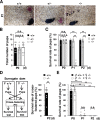
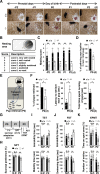
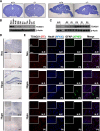
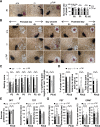
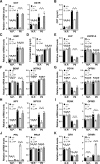
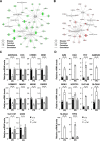
Similar articles
-
Impairments in the initiation of maternal behavior in oxytocin receptor knockout mice.PLoS One. 2014 Jun 3;9(6):e98839. doi: 10.1371/journal.pone.0098839. eCollection 2014. PLoS One. 2014. PMID: 24892749 Free PMC article.
-
Combined effect of gestational stress and postpartum stress on maternal care in rats.Physiol Behav. 2018 Feb 1;184:172-178. doi: 10.1016/j.physbeh.2017.11.027. Epub 2017 Nov 26. Physiol Behav. 2018. PMID: 29179996
-
Chronic corticosterone during pregnancy and postpartum affects maternal care, cell proliferation and depressive-like behavior in the dam.Horm Behav. 2010 Nov;58(5):769-79. doi: 10.1016/j.yhbeh.2010.07.012. Epub 2010 Aug 3. Horm Behav. 2010. PMID: 20688070
-
Genetic and physiological determinants of maternal behavior and lamb survival: implications for low-input sheep management.J Anim Sci. 2008 Apr;86(14 Suppl):E246-58. doi: 10.2527/jas.2007-0404. Epub 2007 Aug 20. J Anim Sci. 2008. PMID: 17709772 Review.
-
Bringing birth-related paternal depression to the fore.Women Birth. 2008 Jun;21(2):65-70. doi: 10.1016/j.wombi.2008.03.008. Epub 2008 May 13. Women Birth. 2008. PMID: 18479990 Review.
Cited by
-
Expanding on roles of pleckstrin homology-like domain family A member 1 protein.Cell Tissue Res. 2025 Jan;399(1):9-25. doi: 10.1007/s00441-024-03942-2. Epub 2024 Dec 4. Cell Tissue Res. 2025. PMID: 39630301 Free PMC article. Review.
-
The BDNF-FoxO1 Axis in the medial prefrontal cortex modulates depressive-like behaviors induced by chronic unpredictable stress in postpartum female mice.Mol Brain. 2020 Jun 12;13(1):91. doi: 10.1186/s13041-020-00631-3. Mol Brain. 2020. PMID: 32532322 Free PMC article.
-
A new molecular risk pathway for postpartum mood disorders: clues from steroid sulfatase-deficient individuals.Arch Womens Ment Health. 2021 Jun;24(3):391-401. doi: 10.1007/s00737-020-01093-1. Epub 2020 Nov 20. Arch Womens Ment Health. 2021. PMID: 33219387 Free PMC article. Review.
-
Analysis of Differentially Expressed Genes That Aggravate Metabolic Diseases in Depression.Life (Basel). 2021 Nov 7;11(11):1203. doi: 10.3390/life11111203. Life (Basel). 2021. PMID: 34833079 Free PMC article.
-
TDAG51 deficiency attenuates dextran sulfate sodium-induced colitis in mice.Sci Rep. 2022 Nov 30;12(1):20619. doi: 10.1038/s41598-022-24873-4. Sci Rep. 2022. PMID: 36450854 Free PMC article.
References
-
- Josefsson A, Berg G, Nordin C, Sydsjo G. Prevalence of depressive symptoms in late pregnancy and postpartum. Acta Obstet Gynecol Scand. 2001;80(3):251–5. - PubMed
Publication types
MeSH terms
Substances
LinkOut - more resources
Full Text Sources
Molecular Biology Databases

